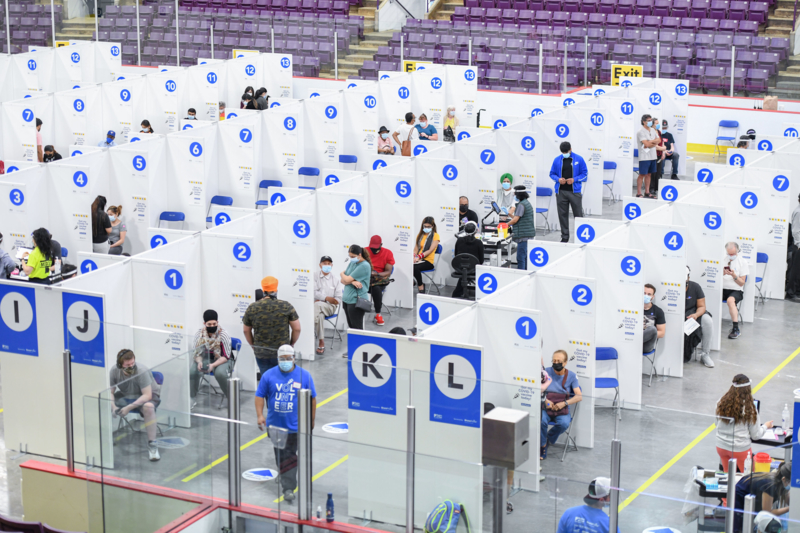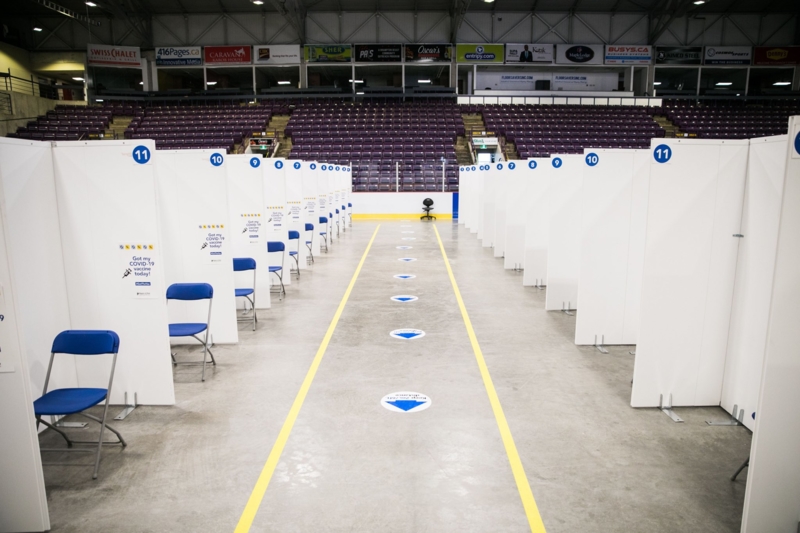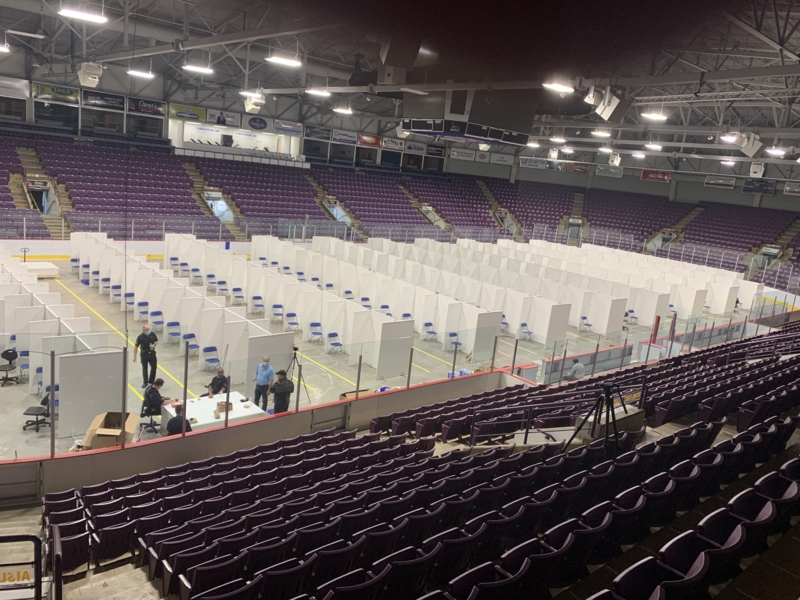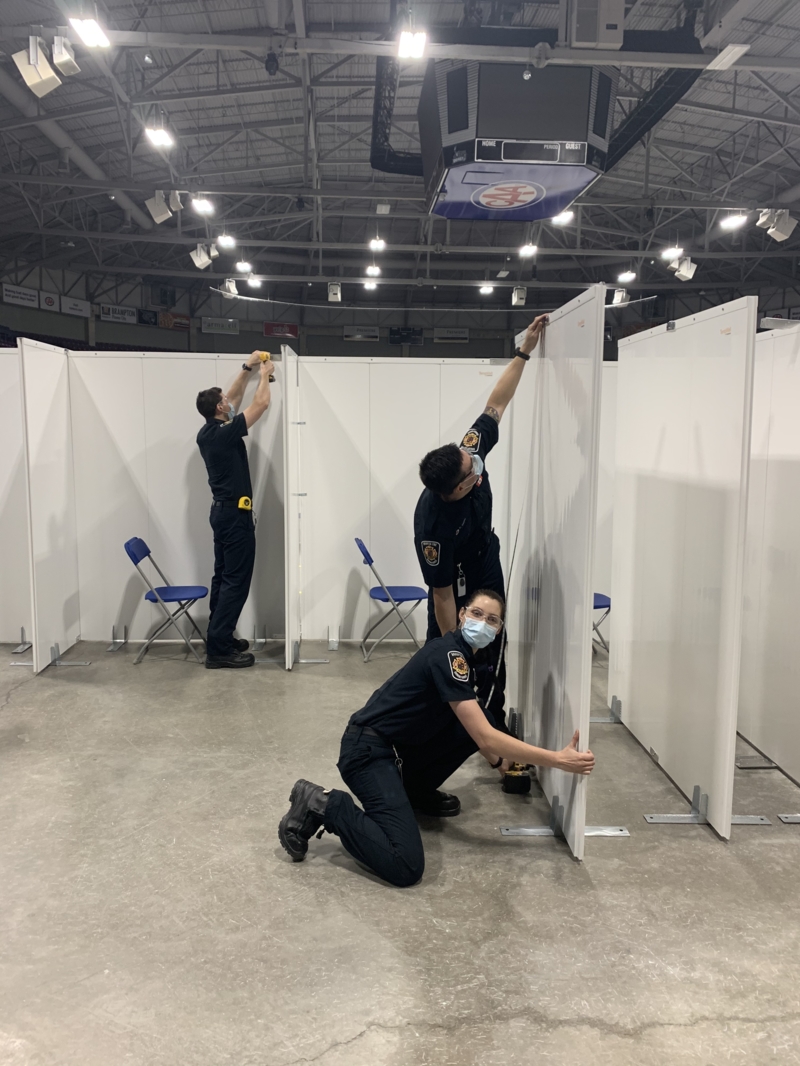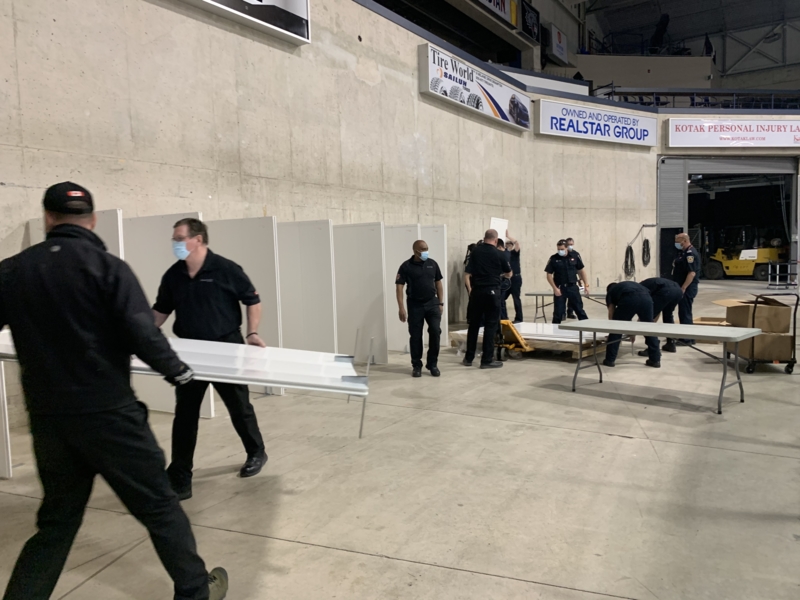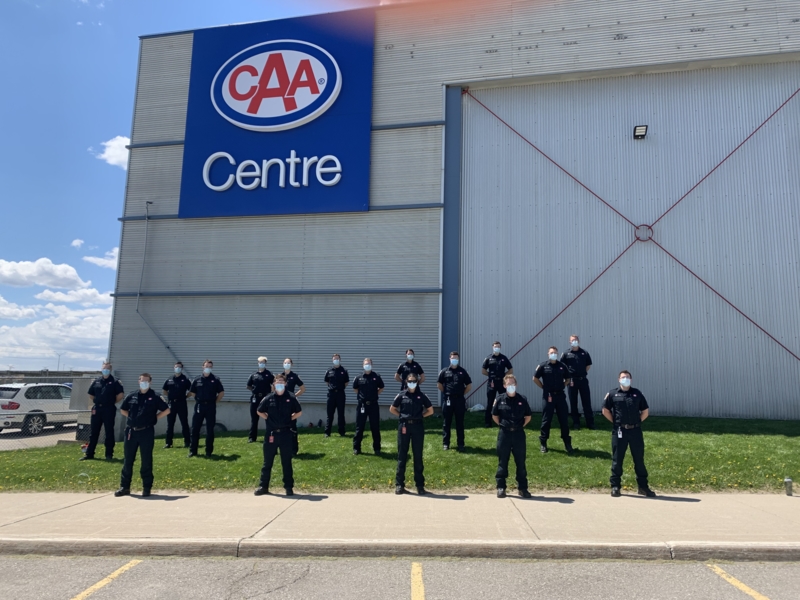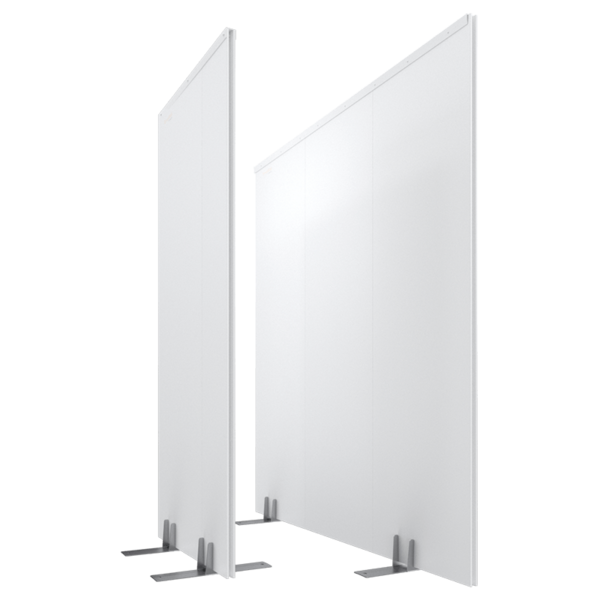Customer Story
Pandemic Priorities
How Bruce Power partnered with Trusscore to safely design and execute an innovative mass vaccination model
The Rundown
When the going got tough during the COVID-19 pandemic, Bruce Power got going. The nuclear power generation company purchased hundreds of TempWall by Trusscore panels — anti-microbial, hospital grade, temporary modular wall systems — and used them to help local communities in setting up temporary health and vaccination clinics throughout Ontario, Canada.
Why did Bruce Power insist on TempWall by Trusscore as the backbone of vaccination hub floorplans? Read on to find out!
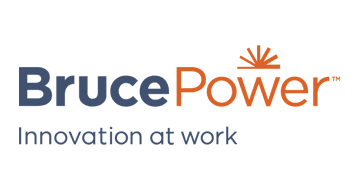
Bruce Power
- Established in 2001
- Canada’s only private sector nuclear generator
- Supplies a third of Ontario’s electricity
Tiverton, Ontario, Canada
Power Move
Community matters to Bruce Power. When the World Health Organization declared COVID-19 a global pandemic in the Spring of 2020, it quickly became apparent that hospital resources may eventually become overwhelmed in the cities and towns of the Bruce Peninsula, and along the eastern shore of Lake Huron, near where Bruce Power operates. People were frightened. The company promptly mobilized its people and resources to help relieve the pressure, working with public health authorities to establish temporary recovery centres in hockey arenas in various communities.
“We're a close-knit community, and we're part of the community,” explains James Scongack, Bruce Power Chief Development Officer and Executive Vice-President of Operational Services. “I think, fundamentally, the approach that we [took] was, given the unprecedented challenge that COVID-19 presented, we had to match that response with a level of support. So that was what really drove us. Community is a key value in our organization, and we wanted to reflect that in terms of doing everything we reasonably could do to support this significant challenge.”
Making innovative use of TempWall by Trusscore – temporary hospital-grade modular walls that are quick and easy to install, re-configure, and remove – the Bruce Power team worked with the Grey Bruce Health Unit to quickly establish these temporary facilities in several Grey-Bruce communities. The TempWall panels allowed staff to create temporary “rooms” for treatment and recovery, relieving burdens on local hospitals and health centers and maintaining safe separation between individuals.
We had a model that had worked, we had a setup that had worked. We had a high-quality [Trusscore] product that could be cleaned, assembled quickly, and moved if needed. And so, we really just continued that partnership into the mass vaccination phase.
James Scongack, Chief Development Officer and Executive Vice-President at Bruce Power

Months later, the initial wave of infections had receded, vaccines began to be rolled out, and a new urgent need arose: mass vaccination centers. Bruce Power mobilized once again. It repurposed the same TempWall by Trusscore panels previously used for local recovery centers and rapidly reconfigured to support the mass vaccination hockey hub model, created by Dr. Ian Arra, Chief Executive Officer and Chief Medical Officer of Health for the Grey Bruce Health Unit, which provided the capacity to administer 4,000 vaccine doses per day, per facility.
Rather than requiring individuals to line up to receive their vaccine dose, TempWall panels were configured in a layout that created many rows of three-walled stations where people could sit and wait for health-care workers to bring the vaccine dose directly to them. This remarkable system proved to be far more efficient than other common models and was highly effective in protecting the safety of visitors and health workers alike.
Trusscore is revolutionizing PVC building materials with materials-science-based nanotechnology. All products provide active or passive protection for infection control and biosecurity and are designed to help prevent, contain, and destroy bacteria, fungi, and viruses including SARS-CoV-2 surrogate — which TempWall by Trusscore provides 99.9% antiviral efficacy against.
Since the onset of the COVID-19 pandemic, Trusscore products have been used across North America to help prevent the spread of COVID-19 in healthcare applications.
Where Flexible Meets Functional
The decision by Bruce Power to use TempWall by Trusscore was based on several needs, but most crucially, the company required a product that was versatile and readily available. TempWall, which can be configured in a host of different ways, fit the bill. It was versatility that allowed Bruce Power to repurpose its TempWall panels for vaccination centers immediately after using them for a vastly different original purpose.
“When the shift moved [us] from recovery centers to mass vaccination, the product was flexible enough that we were able to repurpose it, reuse it,” says Scongack. “And, obviously, that flexibility is important when you're considering multiple sites, multiple uses. We had a model that had worked, we had a setup that had worked. We had a high-quality product that could be cleaned, assembled quickly, and moved if needed. And so, we really just continued that partnership into the mass vaccination phase.”
TempWall was also an ideal product given worldwide concerns about virus spread and the pandemic itself. The entire surface of TempWall by Trusscore for Healthcare provides antimicrobial protection, which came with peace of mind for staff and visitors alike.
Another key ingredient to Bruce Power’s decision to trust TempWall for the job is that the product is so easy to clean. TempWall is unharmed by chemicals like bleach or detergents. This factor made infection control inside the vaccination hubs much easier.

The product was flexible enough that we were able to repurpose it. Flexibility is important when you're considering multiple sites, multiple uses.
— James Scongack, Chief Development Officer and Executive Vice-President at Bruce Power
The Right Product at the Right Time
The pandemic has proven to be an unprecedented challenge worldwide.
Companies like Bruce Power have stepped up to meet that challenge – leveraging innovative, versatile products like TempWall by Trusscore to deliver a robust response during the COVID-19 pandemic.
“I think the entire Bruce Power organization is proud that we were able to make a difference and make a contribution in a number of different ways to really confront the historic challenge that we're all faced with COVID-19,” says Scongack.
Throughout this pandemic, it has been no secret that North America’s businesses, doctors, scientists, innovators, leaders, and front-line workers have stepped up in unimaginably remarkable ways to keep us all safe.
TempWall by Trusscore was there to help at the beginning of this journey and it continues to stand by, ready to help serve the needs of our communities.
Trusscore to the Temporary Wall Rescue
TempWall
TempWall by Trusscore is a hospital-grade, temporary modular wall system that is quick and easy to install, re-configure, and remove.
Learn MoreMore to Explore
Grey-Bruce Vaccine Response
How Trusscore modular walls are helping with delivery of COVID-19 vaccinations
Learn MoreHow Science Infused PVC Wall Panels with Antimicrobial Protection
The R&D team at Trusscore is dedicated to enhancing the company’s product line and coming up with solutions to unique production problems and pushing the boundary of what’s possible in the building material field.
Learn MoreGet On the Bus
How temporary wall solutions are playing a role in a mobile COVID-19 screening program
Learn More
